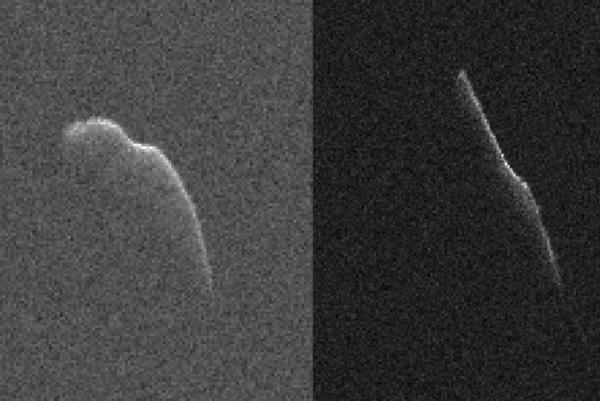
WASHINGTON, Dec. 23 (UPI) — New images, shared Wednesday by NASA, showcase the size and shape of the Christmas Eve asteroid — the highest resolution images to date.
As UPI previously reported, asteroid 2003 SD220 will pass by Earth on the day before Christmas at a distance of 6.8 million miles, or 28 times the distance between the moon and the Earth.
The new radar images of the asteroid were collected over the last week by Deep Space Network’s 230-foot (70-meter) antenna at Goldstone, California.
“The radar images data suggest that asteroid 2003 SD220 is highly elongated and at least 3,600 feet in length,” Lance Benner, a scientist at the Jet Propulsion Laboratory and head of NASA’s asteroid radar research program, said in a press release. “The data acquired during this pass of the asteroid will help us plan for radar imaging during its upcoming closer approach in 2018.”
The forthcoming flyby is just one of five asteroid 2003 SD220 encounters Earth will experience over the next 12 years. The asteroid will be back in three years at an even closer distance of 1.8 million miles.
Though NASA is aware of dozens of Near Earth Objects, there are no known objects on a direct collision path with planet Earth. Still, astronomers are interested in studying the ways asteroid orbits can be influenced by the gravity of other objects.
“By obtaining radar ranging measurements at each observing opportunity, it may be possible to detect non-gravitational perturbations due to the Yarkovsky effect,” NASA researchers wrote in a blog post earlier this month. “If so, then we can obtain an estimate of the object’s mass, information that is invaluable for understanding the object’s bulk density and internal structure.”
The Yarkovsky effect is the rotational force enacted on an asteroid as it is heated and cooled by solar radiation. The effect can slightly alter an asteroid’s orbital path over time, and a better understanding is key to more accurately predicting the trajectories of future asteroids.
The Christmas holidays will feature a couple of astronomical phenomena this year. Several hours after the asteroid flyby, a full moon will visit Christmas Day for the first time since 1977.





